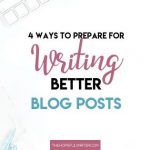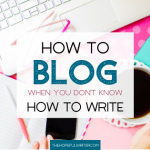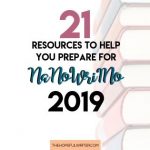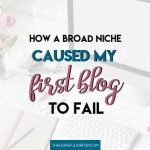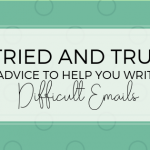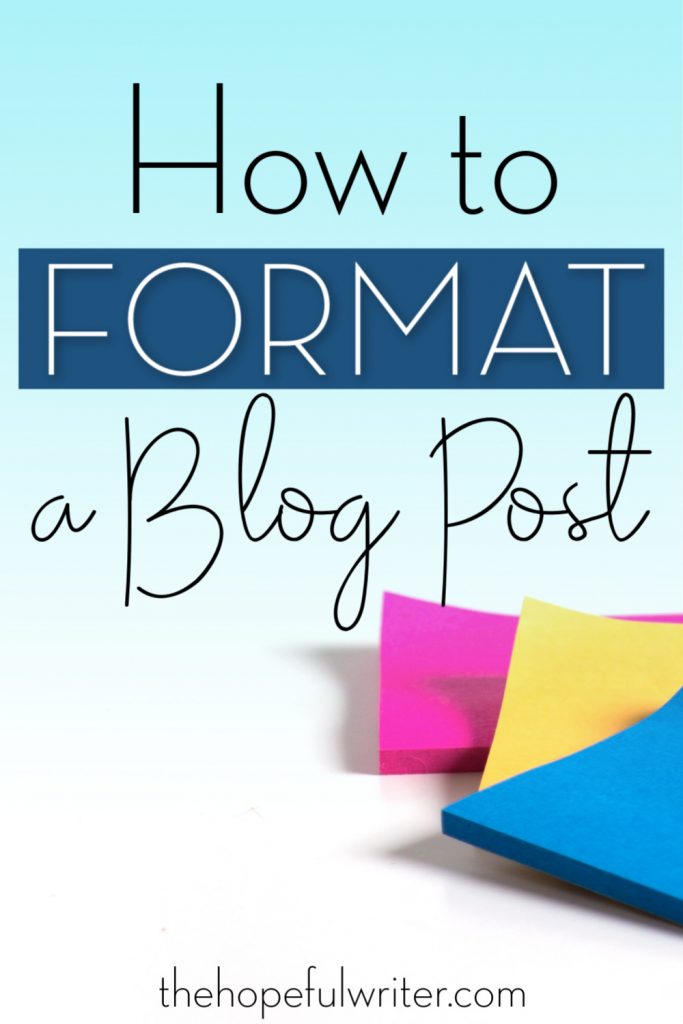
Imagine you’re hanging out with a friend, and she’s telling you a fascinating story, but it’s all out of order.
It’s not so fascinating anymore, is it?
Instead of being intrigued, you’re just confused, and you excuse yourself to grab a glass of water, hoping she’ll forget her story by the time you come back.
The same thing could happen with your audience if your blog post is all over the place. You know what you want to write about, but figuring out how to format a blog post can be another challenge. Instead of just winging it, follow these five super simple steps to organizing a blog post or article:
Create a Catchy Headline
Your readers have no obligation to read your blog post.
What would cause them to click on your blog post to interrupt their Facebook or Pinterest scroll sesh while they’re working, going to the bathroom, or just killing time?
If you don’t have a good headline, people aren’t going to click on your blog posts. When I create a headline, I ask myself: what would make somebody click on this? What would convince somebody to take time out of their day to read this?
Coming up with a good headline will help encourage somebody to click on your post and take time out of their busy day to read what you have to say.
Create a headline that will make them stop, but try to avoid clickbait. Clickbait headlines are deceiving or exaggerated (e.g., “The Chocolate Cake that Killed My Husband” or “You WILL Lose 15 Pounds in a Week with This Salad Recipe”).
Here are some characteristics of a good headline:
1. It’s Honest. Be honest about what your blog post will deliver. For example, I have a post about how to write faster. If I wanted to get TONS of traffic, I could have a title like, How to Write 5000 Words In An Hour. My post does give tips on how to write quicker, but it doesn’t teach people how to write 5000 words in an hour, so I definitely shouldn’t set up those expectations.
2. It Makes a Promise. Your blog post should answer some sort of questions (unless it’s purely for entertainment, then it promises to provide a good laugh). Even if your promise is not obvious, your headline should hint to what your readers will get from reading this. For example, my post How to Write a Blog: The Beginner’s Ultimate Guide implies that I have lots of information about how to write a blog post. If you were to look at my post and see that I only have a few tips, would you be disappointed?
3. It’s Captivating. Like I mentioned before, readers are obligated to click on your post. Create a title that will suck them in! Honestly, I have a hard time with this sometimes, so I like to look at blog post title templates. I also love these ideas for compelling titles from HubSpot’s blog.
Hook the Reader with an Intriguing Intro
You only have a few seconds to get the reader hooked. What can you say? Stories are a great way to start out, but try not to waste your time on pointless anecdotes or overdrawn explanations. Cut to the chase, but also don’t be boring.
My favorite writing advice of all time is “less is more.” Say what you have to say using descriptive words, but don’t add too much more.
One of my favorite blog posts of all time is “How to Talk to Little Girls.” The post is about the damage that beauty-centered conversations can have on girls. Here’s the intro:
“I went to a dinner party at a friend’s home last weekend and met her five-year-old daughter for the first time.
Little Maya was all curly brown hair, doe-like dark eyes, and adorable in her shiny pink nightgown. I wanted to squeal, ‘Maya, you’re so cute! Look at you! Turn around and model that pretty ruffled gown, you gorgeous thing!’
But I didn’t. I squelched myself. As I always bite my tongue when I meet little girls, restraining myself from my first impulse, which is to tell them how darn cute/ pretty/ beautiful/ well-dressed/ well-manicured/ well-coiffed they are.”
The author, Lisa Bloom, could have jumped right into all the shocking facts about dieting and Botox, but she chose to tell a story first. She didn’t provide any unnecessary details, but just enough that you can see Little Maya, and you want to know why she was reluctant to tell Maya how cute she was.
As you write your intro, ask yourself what would convince your readers to keep going. What would make them feel like they need to know the rest of what you have to say?
Here are a few ideas for how to start your blog post:
- Address your readers’ pain points and desires
- Share a statistic
- Tell a story
- Ask a question
Share Your Main Points in an Easy to Read Format
This next part is the cheese on your pizza, or whatever part you think is most vital. This is the whole reason you’re writing your post. Make it as easy to read as possible by using pictures, bullet points, and numbered lists to break it up if you can.
You probably have some fans who can’t wait to get a notification about new content on your blog, but there are likely a ton of other people who have never heard of you. These people aren’t dedicated to reading what you have to say, at least not yet. They’ll skim and make it fast unless your content is intriguing enough to make them want more.
If you’re telling a captivating story, bullet points and numbered lists would be distracting, so this is more appropriate if you are trying to provide helpful information for your audience. Writing how-to or other informational content in a format that is easy to digest will be best for your readers.
Check out this post for more ideas on how to write captivating blog content.
Close with a Short Conclusion
You’re not writing an essay, so don’t worry about rehashing everything you talked about. Nobody will be grading you on whether you recapped your eight tips for improving skin.
When I’m reading a blog post, I ignore this part most of the time. I got what I wanted out of the main points, and now I’m ready to move on. But still, it’s good to have a conclusion to reiterate the purpose of the post or wrap up your thoughts on the topic.
Extend an Invitation for Comments or Other Communication
I love to see just a few words at the bottom of a blog post inviting readers to share their thoughts right there or on a social media page. It welcomes communication and helps pull your reader into your community, which is one way to get them to keep coming back.
Keep it simple with phrases like, “Do you have any other ideas? Comment below!” or “Let me know what you think of the recipe! Share your thoughts in the comments.” This is warm and helps you to be more approachable.
If you want to start a blog, but aren’t comfortable with writing, try these steps to get started. And I would love to hear any questions or comments you may have. Drop ’em below!
If you need help with more than just how to format a blog post, check out my free email course, “5 Days to Better Blog Writing”!

